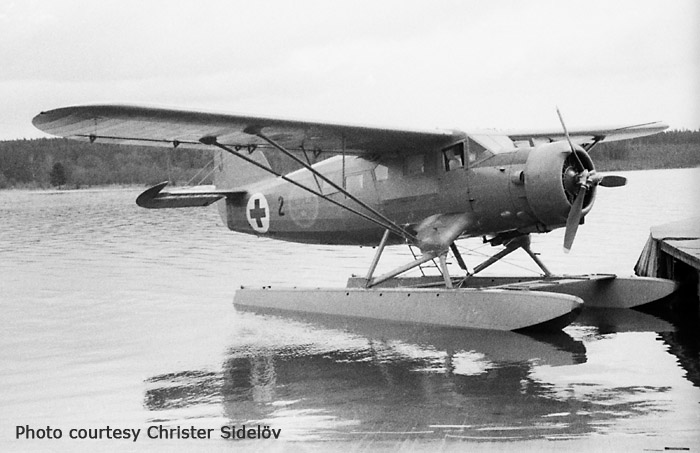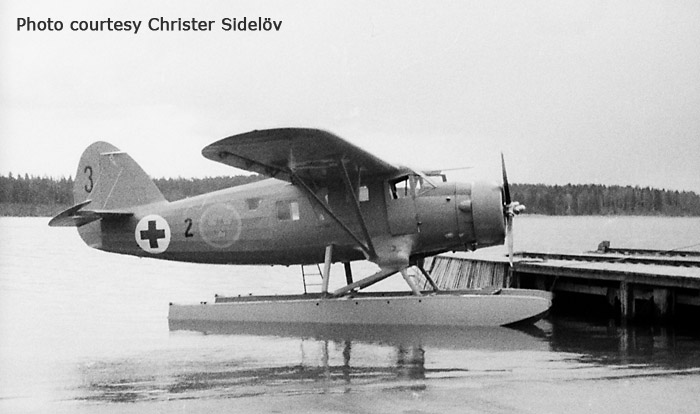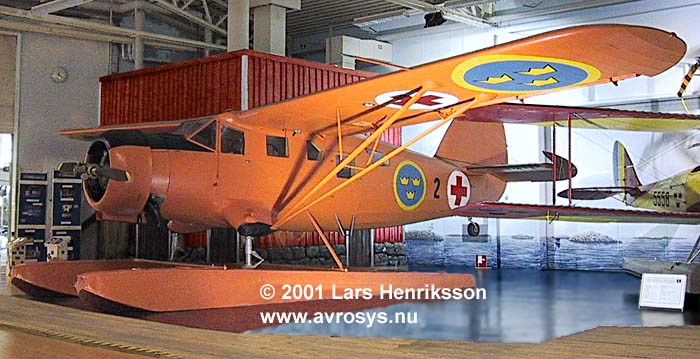|
|
||
| Tp 78 - Noorduyn UC-46A Norseman (1948-1959) | ||
| Page 1 (1) | ||
|
|
||
 |
||
|
R.B.C.
Noorduyn, founder of the Noorduyn Aircraft Limited, designed a typical
aeroplane for ”bush-flying” in the remote areas of Canada. It should
be able to be used with wheels, skis or floats, be high-winged to give
the pilot a good view and to have a powerful engine. The prototype,
named Norseman I, flew for the first time on 12 November 1935. The
somewhat modified variants Norseman II and Norseman III, became soon
popular by small airliners.
The
fuselage consisted mainly of a framework of chrome-steel piping covered
with canvas. The wings had wooden spars and ribs. The front edge of the
wings was covered with duralumin.
The
rigid landing gear was - like other Canadian ”bush-planes” - fitted
with shock absorbers of both hydraulic and pneumatic type. The change
between wheels, skis or floats could be done fast.
In
the end of the forties, the Swedish Air Force bought three Norsemans for
Search And Rescue/Flying Ambulance service.
The three machines belonged
from the beginning the USAAF, but were after the war purchased by the
Swedish aviation enterprises ”Norrlandsflyg AB” (SE-ASC, SE-ASA) and
”Ahrenbergsflyg” (SE-ATB). They were of the USAAF variant UC-64A.
In the Swedish Air Force they got the designation Tp 78 (Air Force numbers 78001 - 78003).
The
aeroplanes were painted all orange according to the regulations. In
additions to the roundels of the Swedish Air Force, they got Red Cross
markings on fuselage and wings. 78002 was ex USAAF 44-70336, registered in Sweden in 1946 as SE-ASA and namned "Abisko". This aircraft was purchased by the Air Force in April, 1949. It was based at Wing F 21 at Kallax in the north of Sweden, but was later moved to F 4 and in June 1954 to F 2 at Hägernäs. It was destroyed about a month later in a crash at Blidö in the archipelago north of Stockholm. 78003 (ex USAAF 44-70294 and since 1946 SE-ATB) was taken over by the Air Force in December, 1951 and was based at F 2 until it was destroyed in a fire in September, 1956.
The
Tp 78 had a flight crew of two from the Air Force. Usually, one civil
doctor or nurse joined the crew at ambulance flights. At transport
flights (without stretcher), eight passenger could be carried.
The
Tp 78 had one Pratt & Whitney R-1340-AN-1 engine, delivering 600 hp.
SE-CLZ (once 78001) was bought by Flygvapenmuseum in 1980 and restored close to Tp 78 standard (photo at bottom). The b/w photos at top and below show # 78003 in the time of its active service. Note that the museum aircraft lacks the original floats. These were replaced by floats from a SAAB S 17BS. Lenght: 9,68 m. Span: 15,80 m. MTOW 3.363 kg. Max speed: 272 km/h (wheels) - 246 km/h (floats). |
||
 |
||
 |
||
 |
||
|
CF-SAM was one of two Norseman aircraft bought by the Saskatchewan Air Ambulance Service in Canada in 1946. The need for this was great. Thousands of citizens lived in rural areas in this waste province. CF-SAM (C/n N29-27) is preserved and on display in the Western Development Museum. The memorial stamp was released in 1982. |
||
|
|
||
|
|
||
|
|
||
|
© Lars Henriksson |
|
Updated 2010-02-16 |
|
|
||